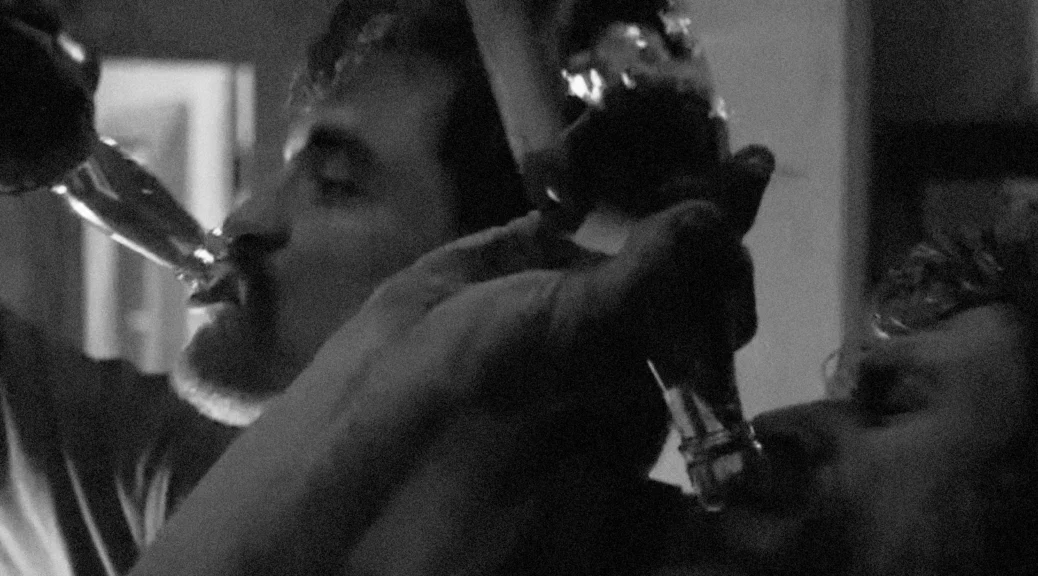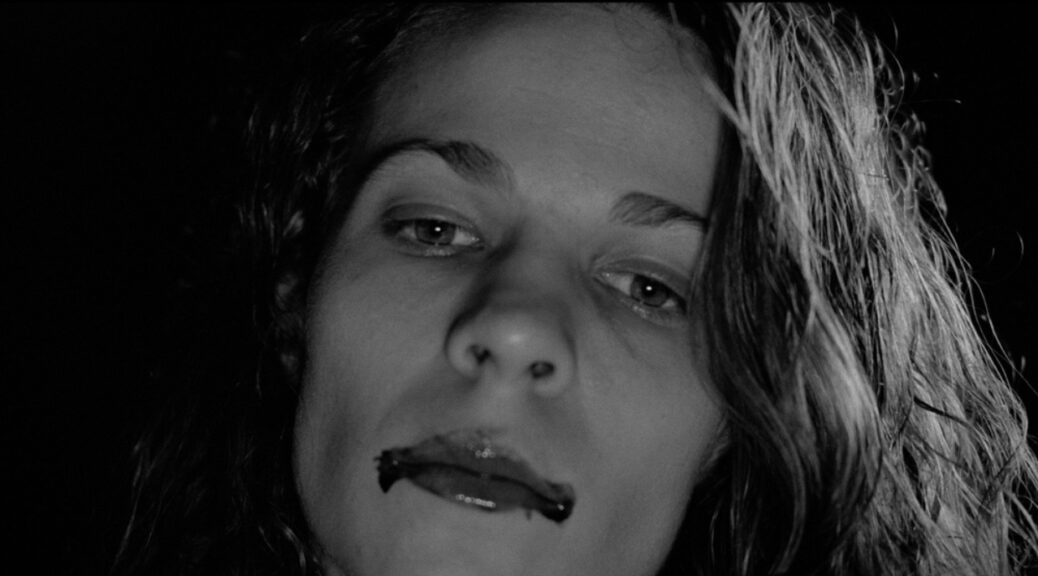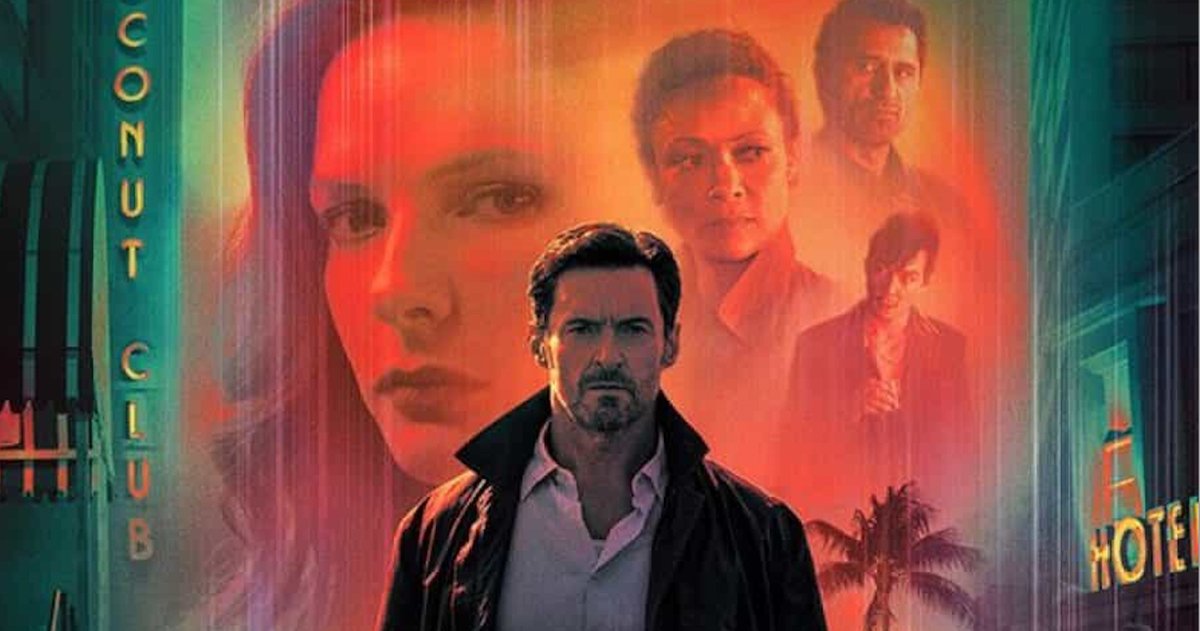Whether they’re merrymakers (Grabbers), comic relief (Mrs. MacHenry, Black Christmas), tempted heroes (Dan Torrance, Doctor Sleep), or outright villains (Jane, What Ever Happened to Baby Jane), the drunk is a staple of horror. They can generate a laugh to help offset tension, or develop dread along with their temptation. They can add tragedy, comedy, lunacy and even terror. Here are our favorite horror movie alcoholics.
5. John Grant (Gary Bond), Wake in Fright (1971)
An unrelenting work of tension and sweat, Ted Kotcheff’s Outback thriller follows an aggrieved school teacher who stops over for a single night in the Yabba on his way from his consripted teaching post to Sydney for Christmas.
One bad decision later, and he (John Grant) and we are trapped, possibly forever, in drunken, mad, dangerous, almost sadistic debauchery. Donald Pleasence co stars as part of a merry band of utter lunatics whose sold purpose seems to be to trap this man in their depravity with them.
4. Sam (Larry Fessenden), Habit (1995)
Writer/director/star Larry Fessenden explores alcoholism via vampire symbolism in this NY indie. Fessenden plays Sam, a longtime drunk bohemian type in the city. He’s recently lost his father, his longtime girlfriend finally cut bait, and he runs into a woman who is undoubtedly out of his league at a party.
And then he wakes up naked and bleeding in a park.
The whole film works beautifully as an analogy for alcoholism without crumbling under the weight of metaphor. Fessenden crafts a wise, sad vampiric tale here and also shines as its lead.
3. John Marshall (Jim Cummings), The Wolf of Snow Hollow (2020)
Writer/director/star Jim Cummings is officer John Marshall of the Snow Hollow sheriff’s department. John’s father (Robert Forster, in his final role) is the longtime sheriff of the small ski resort town, but Dad’s reached the age and condition where John feels he’s really the one in charge.
John’s also a recovering alcoholic with a hot temper, a bitter ex-wife and a teen daughter who doesn’t like him much. But when a young ski bunny gets slaughtered near the hot tub under a full moon, suddenly John’s got a much bigger, much bloodier problem.
Cumming’s script, like his writing for Thunder Road, is full of life, and has hin again juggling random outbursts of absurd non-sequiturs and hilarious anger with real human issues of struggle and loss. John’s afraid of losing his father, women are being preyed upon, and a drink would sure hit the spot.
2. Wake (Willem Dafoe) & Winslow (Robert Pattinson), The Lighthouse (2019)
Robert Eggars has gone to sea. The Lighthouse strands you, along with two wickies, on the unforgiving island home of one lonely 1890s New England lighthouse.
Salty sea dog Thomas Wake (Willem Dafoe) keeps the light, mind ye. He also handles among the most impressive briny soliloquies delivered on screen in a lifetime. Joining him as second is one Ephraim Winslow (Robert Pattinson)—aimless, prone to self-abuse, disinclined to appreciate a man’s cooking. Both enjoy a bit of drink.
This is thrilling cinema. Let it in, and it will consume you to the point of nearly missing the deft gothic storytelling at work. The film is other-worldly, surreal, meticulous and consistently creepy.
And we’ll tell you what The Lighthouse is not. It is not a film ye will soon forget.
1. Jack Torrence (Jack Nicholson), The Shining (1980)
It’s isolated, it’s haunted, you’re trapped, but somehow nothing feels derivative and you’re never able to predict what happens next. It’s Stanley Kubrick’s masterpiece rendition of Stephen King’s The Shining.
Jack Nicholson outdoes himself. His early, veiled contempt blossoms into pure homicidal mania, and there’s something so wonderful about watching Nicholson slowly lose his mind. Between writer’s block, isolation, ghosts, alcohol withdrawal, midlife crisis, and “a momentary loss of muscular coordination,” the playfully sadistic creature lurking inside this husband and father emerges.




